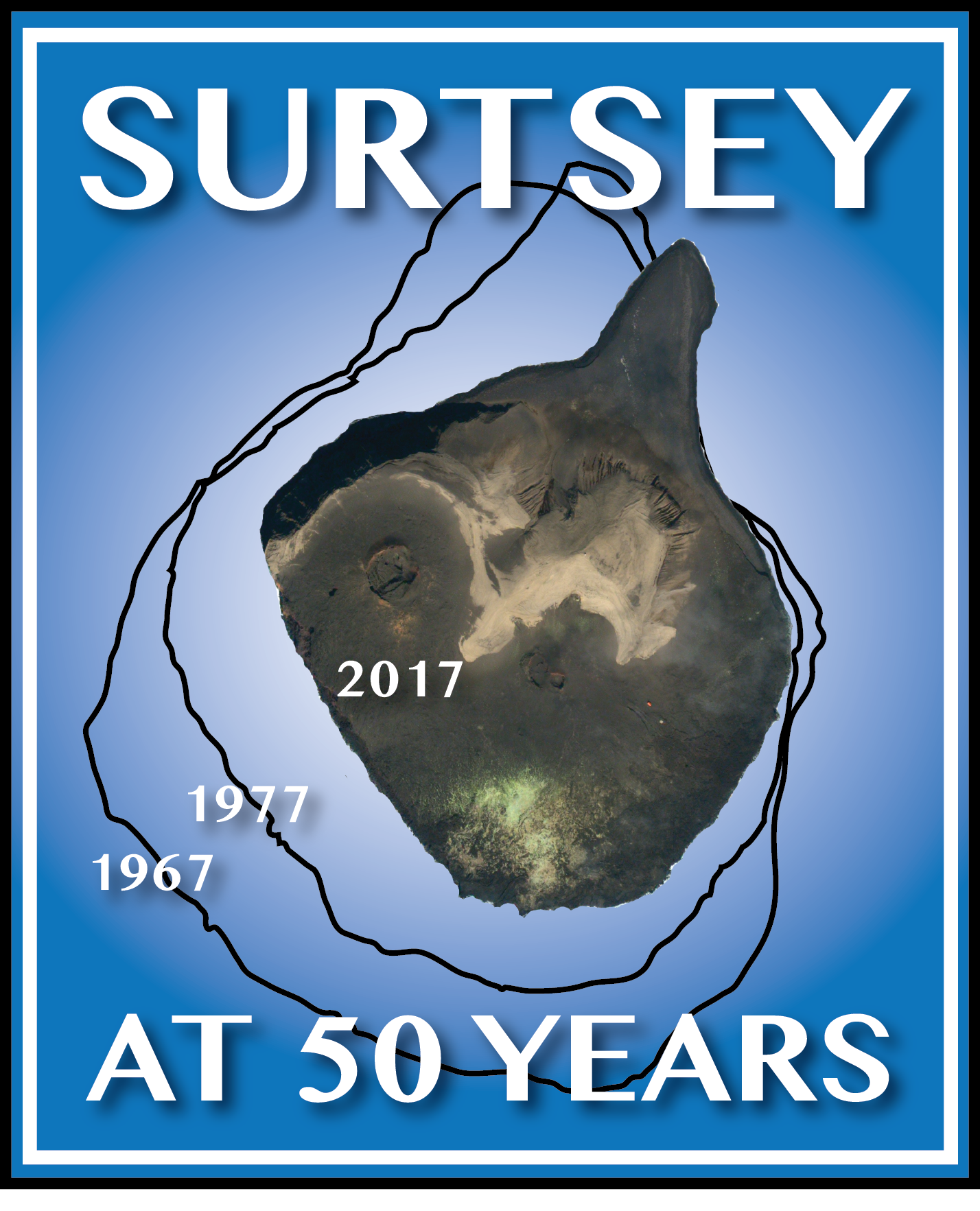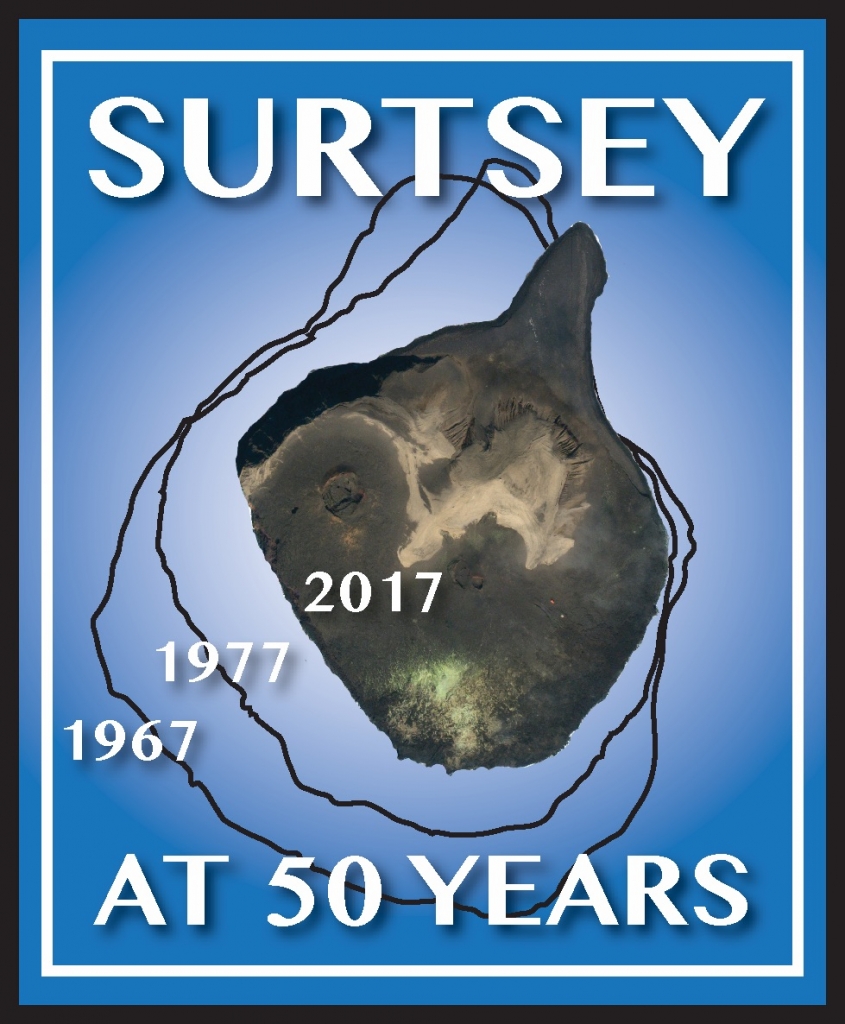Operational Report for the 2017 Surtsey Underwater volcanic System for Thermophiles, Alteration processes and INnovative concretes (SUSTAIN) drilling project at Surtsey Volcano, Iceland
In summer 2017, the ICDP SUSTAIN project (Surtsey Underwater volcanic System for Thermophiles, Alteration processes and INnovative concretes), drilled three cored boreholes through Surtsey next to a 1979 cored borehole. An Atlas Copco CS1000 drill rig, whose components were transported by helicopter to Surtsey and re-assembled on site, acheived the drilling through the still hot volcano. A first vertical borehole, SE-02a, was cored in HQ diameter to 152 meters below surface (m b.s.) August 7-16. It was terminated due to borehole collapse. A second vertical (SE-02b) cored borehole was then drilled in HQ diameter to 192 m August 19-26. A geophysical borehole log of SE-02b was performed August 26. The anodized NQ-sized aluminum tubing of the Surtsey Subsurface Observatory was installed in SE-02b to 181 m depth on August 27. A third borehole, SE-03, angled 35° from vertical and directed 264°, was drilled from August 28 to September 4 and reached a measured depth of 354 m (~290 m vertical depth) under the eastern crater. The core is HQ diameter to a measured depth of 213 m and NQ diameter from 213-354 m measured depth. The core traverses the deep conduit and intrusions of the volcano to a total vertical depth of 290 m b.s. Seawater drilling fluid for boreholes SE-02a and SE-02b was filtered and doubly UV-sterilized at the drill site. No mud products were employed while coring SE-02a, while small amounts of attapulgite mud were used in SE-02b and SE-03. Core samples for geochemical analyses of pore water and microbiological investigations were collected from all three boreholes. About 650 m of core was transported by helicopter to Heimaey, 18 km northeast of Surtsey, to a processing laboratory where the core was scanned, documented, and described. Additional core processing has taken place at the Náttúrufraedistofnun Íslands, the Icelandic Institute of Natural History in Gardabaer, where both the 1979 and 2017 cores are stored.
These are the SUSTAIN science team members who contributed to the Operational Report:
Tobias Björn Weisenberger1, Magnús Tumi Gudmundsson2*, Marie Dolores Jackson3, Carolyn F. Gorny2, Andreas Türke4, Barbara Irene Kleine2, Beau Marshall5, Steffen Leth Jørgensen6, Viggó Thór Marteinsson7, Andri Stefánsson2, James D.L. White8, Amel Barich1, Pauline Bergsten7, Julie Bryce9, Samantha Couper3, Florencia Fahnestock9, Hjalti Franzson1, Carla Grimaldi10, Marco Groh11, Ágúst Gudmundsson12, Ágúst Thór Gunnlaugsson2, Cedric Hamelin6, Thórdís Högnadóttir2, Kristján Jónasson13, Sigurdur Sveinn Jónsson1, Alexandra Klonowski7, Jochem Kück11, Rögnvaldur Líndal Magnússon1, Erica Massey2, Jocelyn McPhie14, Einar Sindri Ólafsson2, Solveig Lie Onstad6, Simon Prause1, Velveth Perez2, J. Michael Rhodes15, Snorri P. Snorrason16
1 ÍSOR, Iceland GeoSurvey, Reykjavík, Iceland
2 University of Iceland, Institute of Earth Sciences, Reykjavík, Iceland
3 University of Utah, Salt Lake City, USA
4 University of Bremen, Bremen, Germany
5 DOSECC Exploration Services, Salt Lake City, USA
6 University of Bergen, Bergen, Norway
7 Matís, Reykjavík, Iceland
8 University of Otago, Dunedin, New Zealand
9 University of New Hampshire, Durham, USA
10 DiSTAR, University FEDERICO II, Naples, Italy
11 Scientific Drilling, GFZ German Research Center for Geosciences, Potsdam, Germany
12 Jardtaeknistofan, Reykjavík, Iceland
13 Icelandic Institute of Natural History, Gardabaer, Iceland
14 University of Tasmania, Hobarth, Australia
15 University of Massachusetts, Amherst, USA
16 Verkís, Reykjavík, Iceland
* corresponding author
(2019) GFZ German Research Centre for Geosciences, http://doi.org/10.2312/ICDP.5059.001

